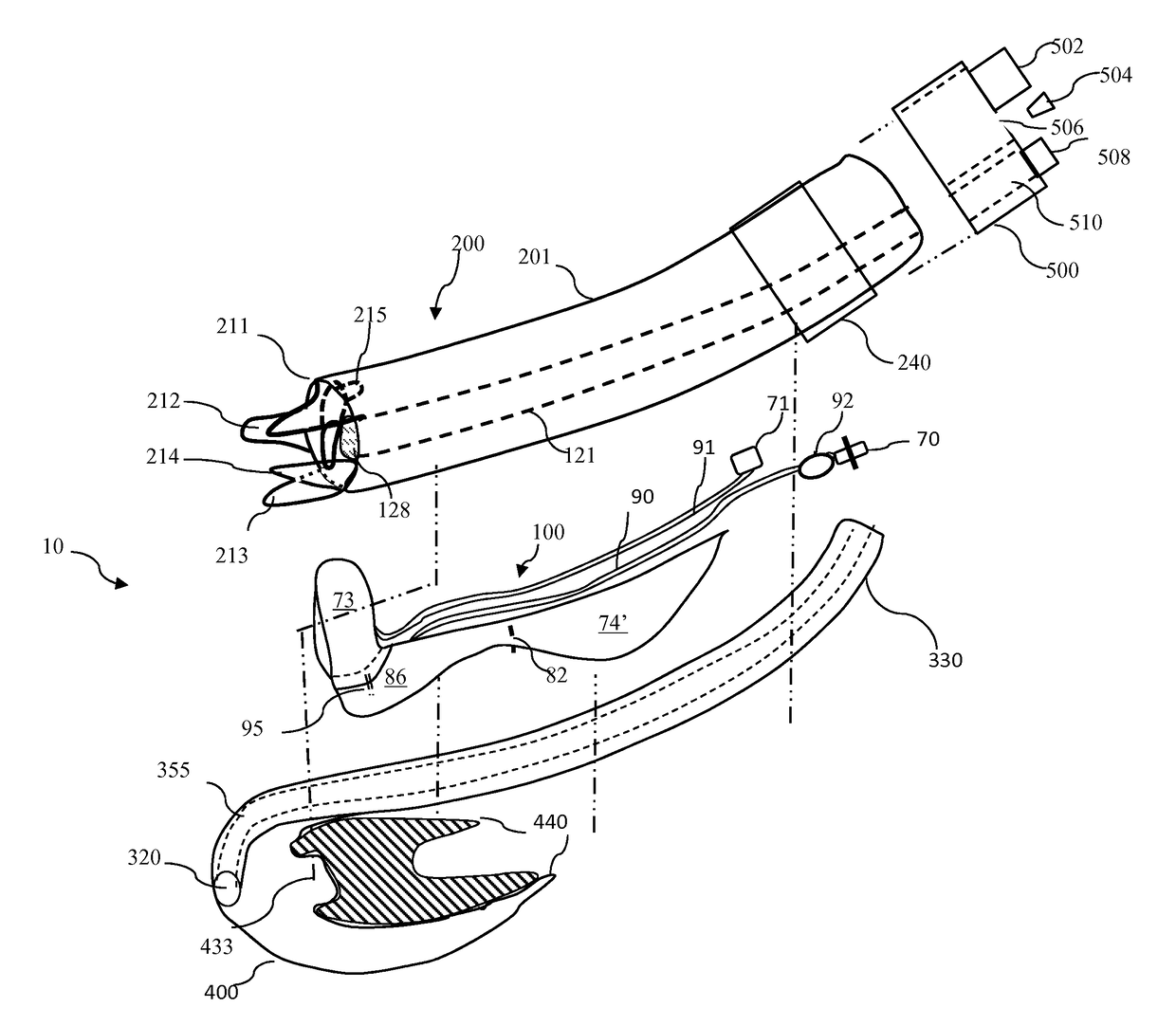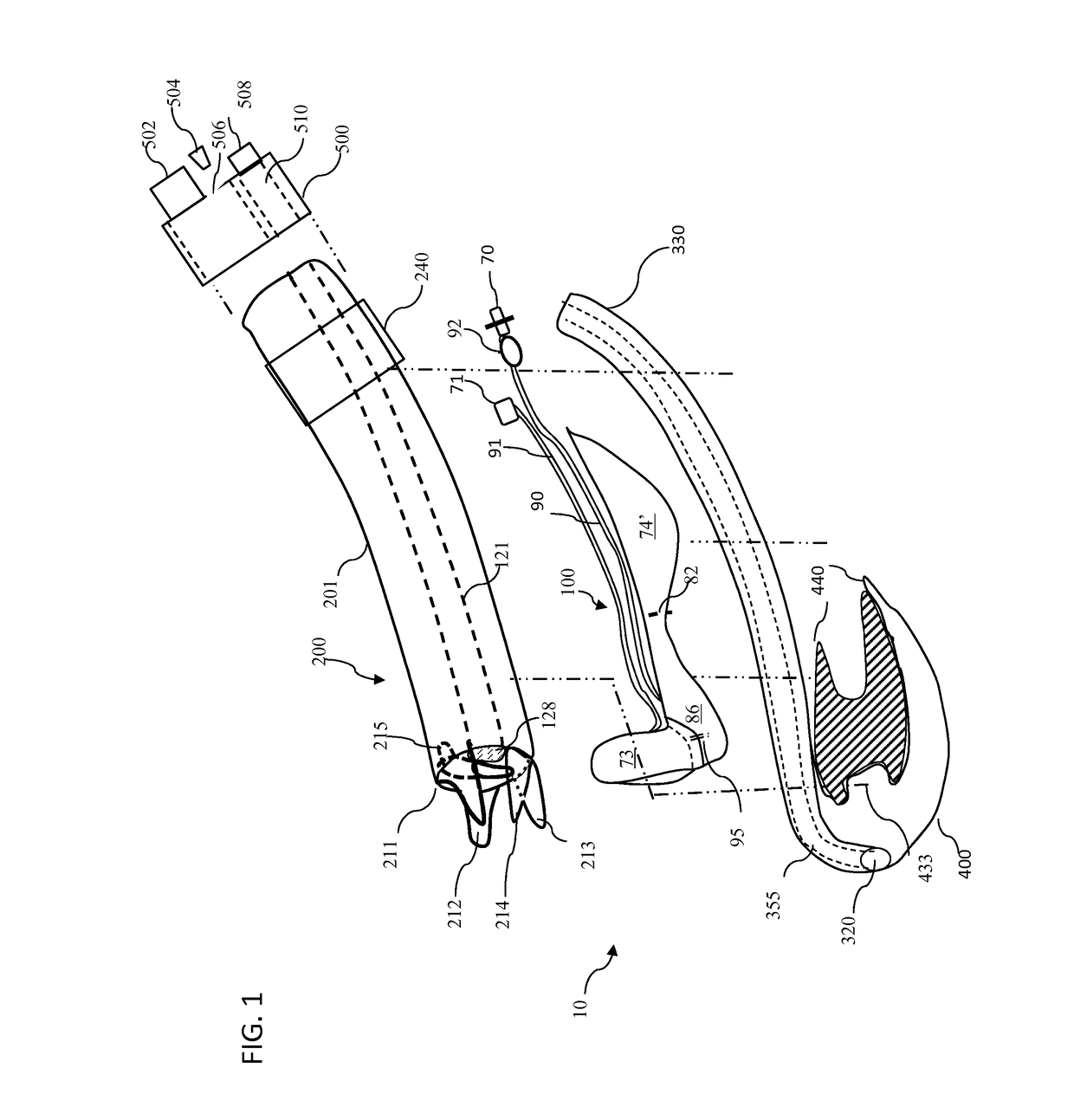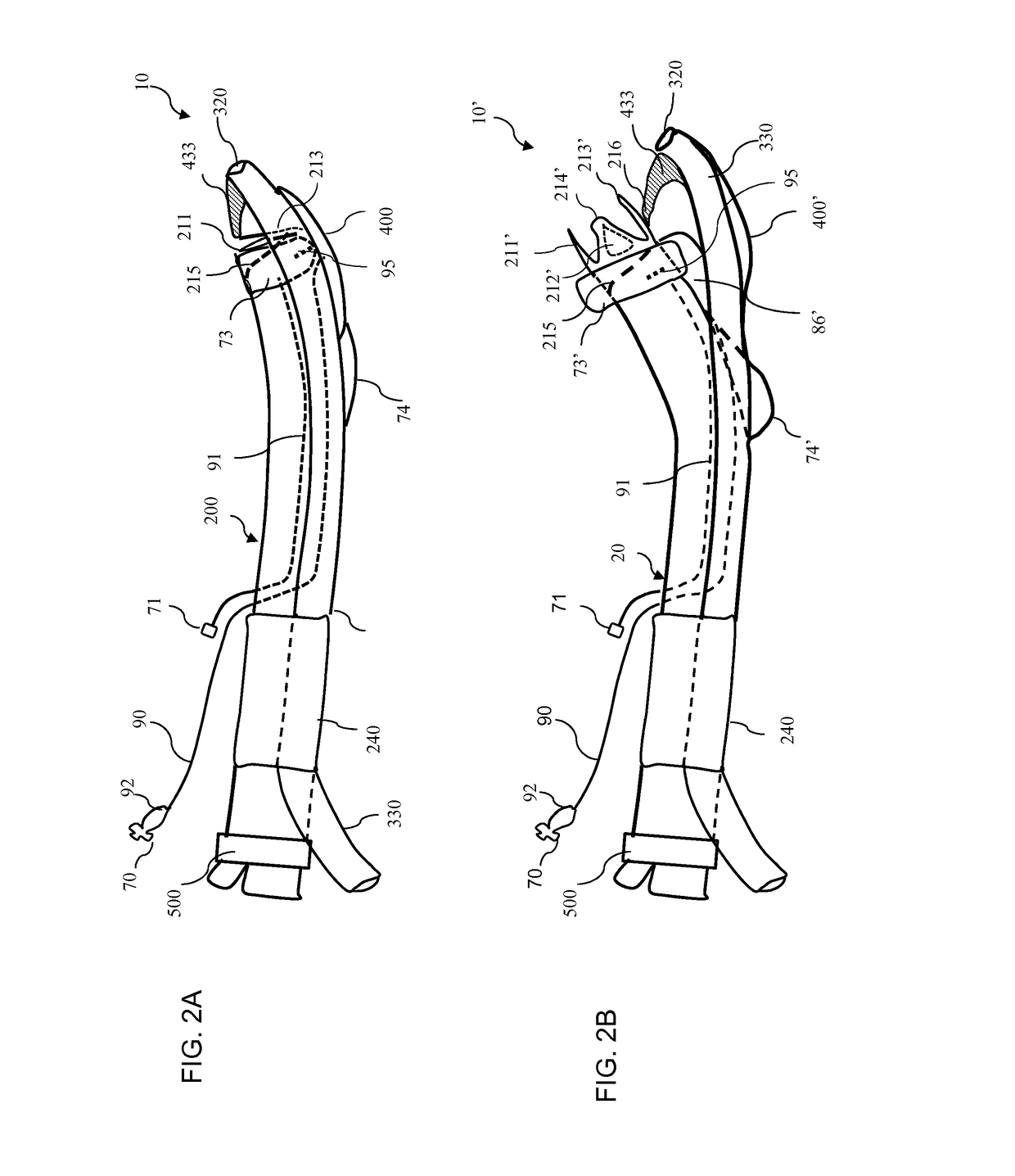Laryngascope free airway device
a free airway and laryngoscope technology, applied in the field of medical airway management devices, can solve the problems of inability to quickly correct the intubation, the inability to visualize the vocal cord, and the risk of the laryngoscope causing significant patient harm,
- Summary
- Abstract
- Description
- Claims
- Application Information
AI Technical Summary
Benefits of technology
Problems solved by technology
Method used
Image
Examples
operational example
[0102]In operation the LFA device is first prepared for insertion. The stylet is inserted into an ETT (endotracheal tube) lumen. The sickle-shaped tip of the stylet is extended beyond the ETT's distal end opening. Then the endotracheal tube can be lubricated and inserted into the air tube or as mentioned above or can have only the stylet inserted into the LFA without an endotracheal tube. The balloon system is deflated, so the tube system and the base will be in close proximity to each other. The one or more expansion projection are tucked under the barb of the base. The LFA is well lubricated. An operator will use one hand to open the mouth and will use the other hand to insert LFA into the mouth. Then an operator uses one or two fingers push down the middle segment of LFA to flex the LFA to follow the curvature of the middle line of natural curvature of the hard palate, soft palate and pharynx until the LFA reaches the proper position. Proper position can be where the leading edge...
PUM
 Login to View More
Login to View More Abstract
Description
Claims
Application Information
 Login to View More
Login to View More - R&D
- Intellectual Property
- Life Sciences
- Materials
- Tech Scout
- Unparalleled Data Quality
- Higher Quality Content
- 60% Fewer Hallucinations
Browse by: Latest US Patents, China's latest patents, Technical Efficacy Thesaurus, Application Domain, Technology Topic, Popular Technical Reports.
© 2025 PatSnap. All rights reserved.Legal|Privacy policy|Modern Slavery Act Transparency Statement|Sitemap|About US| Contact US: help@patsnap.com



